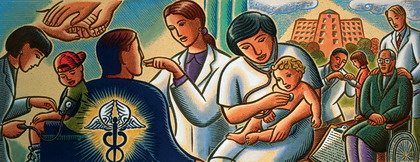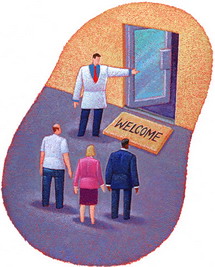“Extraordinary claims require extraordinary evidence.”
Cosmos – Carl Sagan (1934-1996)

Over the last several years, we have made extraordinary claims in our blogs, our speeches, and our consulting. We have made claims that have been questioned, sometimes scoffed at, and generally ignored by the masses who believe that their way is the only way. It is almost as if these claims are so seemingly “out there,” that many believe they could not possibly be true.
- less than 1% infection rates
- lowest restraint rates
- lowest re-admission rates
- lowest mortality rates
- 99% patient approval rates
- 97% employee approval rates
In hindsight, should we have just kept these claims “under the basket” because too many believe they look too good to be true?
When we claimed a bottom line that was over $2.5 M in a hospital with fewer beds than an average wing of most hospitals, you could see the frowns of disbelief on the faces of financial officers. When we claimed those approval rates, the CEO’s of other hospitals simply smiled and probably thought to themselves, “…maybe in your little hospital, but NEVER in mine.”

Now that I am no longer affiliated with my previous employer, let me throw down the gauntlet to you. It is my complete and sincere belief that these results, with your total support and endorsement, can happen in your facilities. It is my further belief that I can help deliver those results for you, so that instead of laying people off, you too can double or triple in size. I believe that you can take your everyday challenges and turn them into unbelievable successes. How? Take the pages from my book on hospital management. (The one that’s not published yet, but firmly planted in my heart and head.) In the interim, get yourself a copy of my first healthcare book that has been published, Taking the Hell Out of Healthcare.
- If you are a genuinely kind person, that will show through in your management style. Kindness is not weakness.
- If you care about your staff, they will care about not only you but also about your patients.
- If you treat people with dignity at all levels of the organization, your organizational culture can change.
- If you help the 10 percent or so of your employees, physicians, and others who do not support this philosophy to find work at neighboring institutions, they will be the gift that keeps on giving as they run rampant over patients at those hospitals and drive those patients to your doors.
These are not difficult assignments. They require only that you stick to your resolve, that you always try to do what is right, and that you do not stop until all of the necessary changes have been made. Healing organizations start with YOU. Healing organizations embrace their human resources. They embrace patient families. They DO NOT function like cold, corporate America. They function like patient-centered America. Kindness in the workplace is not a gimmick, not a fleeting idea, not a once or twice a year thing, it is a complete commitment to a change in culture that reaches out to patients, employees, and medical staff.
 The cost? In the big picture, the cost is not even a consideration. Your investment now is less than you can imagine, as your facilities grow, expand, and thrive. Besides:
The cost? In the big picture, the cost is not even a consideration. Your investment now is less than you can imagine, as your facilities grow, expand, and thrive. Besides:
What does it cost to be nice?
What does it cost to be civil?
What does it cost to be kind?
Healing Hospitals are a way of life. Make sure that your hospital becomes just that, a place for healing.

 One of my many college roommates, Mark, graduated with a perfect, straight-A GPA. In those days the grade point average indicating perfection was a 4.0. He worked harder than anyone I had ever known, and hardly took even a few minute break from studying. For all intents and purposes, he had virtually NO social life, and, except for the occasional pinochle game and a coke-and-pizza break between study sessions, Mark was 100 percent committed to perfection in his grades. As he became more and more sure of himself over the years, he would walk into our apartment and yell out, “Another day, another A!” and mean just that.
One of my many college roommates, Mark, graduated with a perfect, straight-A GPA. In those days the grade point average indicating perfection was a 4.0. He worked harder than anyone I had ever known, and hardly took even a few minute break from studying. For all intents and purposes, he had virtually NO social life, and, except for the occasional pinochle game and a coke-and-pizza break between study sessions, Mark was 100 percent committed to perfection in his grades. As he became more and more sure of himself over the years, he would walk into our apartment and yell out, “Another day, another A!” and mean just that.


